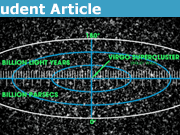Quantum Renormalisation Made Easy
Table of Contents
What Is The Issue With Renormalisation
If you have an interest in physics you have likely come across renormalisation before, although what it really is would probably have not been explained. Instead, you would read Dirac never accepted it, Feynman called it a ‘dippy process’, and if you look under a quantum theorists rug you will find all these infinities.
I read it all and thought – surely it can’t be that bad, and decided to have a look at some papers on it. Typical of what I found was the following:
http://arxiv.org/abs/hep-th/0212049
From the section on conventional renormalisation:
‘In other words, the bare mass has to diverge in such a way that its divergence cancels the divergent loop correction to yield a finite result. It amounts to shuffling the infinities to unobservable quantities like the bare mass. This is the part in renormalization theory which is very difficult to comprehend at the first sight.’
Shuffling infinities around? I was despondent – Feynman was right – it’s dippy. Having a background in math it’s also not legitimate math.
Ok – you do a bit more searching and you find a guy called Wilson sorted this out. But exactly what did he do – how did he resolve it? There doesn’t seem to be much detail at an elementary level explaining it. This is a pity, because once you get past the mind-boggling and mind-numbing manipulations that are done in Quantum Field Theory, it really is pretty simple, as I hopefully will explain.
Perturbation Theory Order Notation
First, we need to get out of the way a standard notation used in perturbation theory. If you have a polynomial in x whose lowest term is of order n then that is written as O(x^n). For example, if you have a polynomial like x^3 + 3*x^4 + 2*x^10, it’s a polynomial of lowest order 3 and is written as O(x^3).
A Look At A Quantum Field Theory Infinity
Ok without further ado just what is the issue. What is your typical QFT infinity? Well, normally you will find these horrid detailed manipulations involving Feynman diagrams with complex improper integrals in 4 dimensions that would make even the most enthusiastic mathematician wince. Do I have to wade through this to get to the nut?
Fortunately, you don’t – you simply need to see the final result. The one I will look at is from meson-meson scattering and you will find the detail on page 145 of Zee – Quantum Field Theory In A Nutshell. I will however write the equation in a simpler and I think even more transparent form than Zee uses.
M(K) = iλ + iλ^2*f(K) + limit Λ →∞ iCλ^2 log(Λ^2) + O(λ^3).
Here M is what’s called the scattering amplitude, K is a momentum, λ the coupling constant in meson theory, f a well-behaved function, C a constant the exact value of which isn’t germane, and limit Λ →∞ iCλ^2 log(Λ^2) the result of evaluating an improper integral over momentum, where the formal definition of such as a limit has been included for reasons that will shortly be obvious.
We can see the problem immediately – the limit blows up.
This is exactly what caused Dirac to despair. If you take the limit you get nonsense. What if you don’t take the limit, but instead assign Λ some value. Such is called introducing a cut-off in the theory. Yes, you get a finite answer – but as Dirac expressed it – the answer depends strongly on the cut-off. So you think about it a bit – what exactly is the cut-off – its a cut-off in momentum. Are we really sure integrating infinity in an improper integral is correct? Large values of momentum mean large values of energy – are we really that sure our theory is correct for energies way beyond what we can reach. It doesn’t seem likely. A cut-off looks a reasonable bet. OK – but what cut-off.
Before seeing how Wilson looks at renormalisation, and how it resolved this, I will for simplicity divide the equation by i, call M(K)/i, λ’, and instead of taking the limit will have Λ fixed at some large, but unknown value. This gives:
λ'(K) = λ + λ^2*f(K) + Cλ^2 log(Λ^2) + O(λ^3). (1)
Now we are ready for the trick of renormalisation. Wilson’s idea was to take the cut-off seriously. We don’t know what cut-off to use – but we think there should be one that gives the correct value of λ’. Suppose Λ is that value and we choose some K denoted by U to give:
λ'(U) = λ + λ^2*f(U) + Cλ^2 log(Λ^2) + O(λ^3). (2)
λ'(U) is given a fancy name – λr the renormalised coupling constant. A fancy name for what really is a simple concept. It’s something that can be measured so using it in a formula is not a problem.
Now (as Zee expresses it in his textbook) behold the wonders of renormalisation. All it is is a simple bit of algebra to replace the coupling constant with λr.
First, its not hard to see, O(λr^n) = O(λ^n) and λ^2 = λr^2 + O(λr^3) so if you subtract (2) from (1) you get
λ'(K) = λr + λr^2*(f(K) -f(U)) + O(λr^3).
The cut-off is gone. Everything is expressed in terms of quantities we know. That we don’t know what cut-off to use now doesn’t matter.
Conclusion
We now have a formula without infinities and the cut-off removed. This is what renormalisation is about. By assuming some cut-off and expressing our formulas in quantities that can be measured, in the above, the renormalised coupling constant, we can actually predict things. There is nothing mathematically dubious happening. It’s a very reasonable and straightforward process.
There is more, indeed a lot more, that can be said. If anyone wants to go further I have found the following good:
http://arxiv.org/abs/hep-th/0212049
Hopefully, this very basic introduction has demystified what is really a simple concept.
My favourite interest is exactly how can we view the world so what science tells us is intuitive.








Leave a Reply
Want to join the discussion?Feel free to contribute!